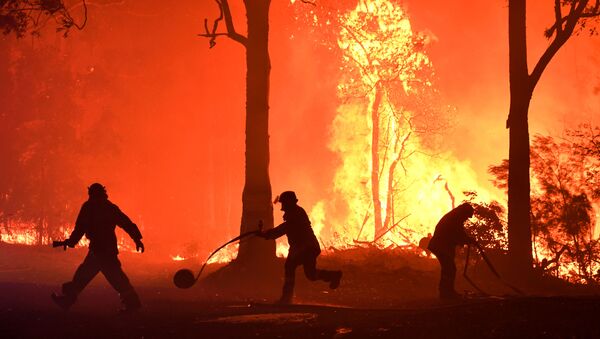The country has been facing hundreds of bushfires since September. The blazes have caused hazardous air conditions in the east and southwest parts of Sydney, the capital of New South Wales (NSW). The mega blaze, raging along the entire NSW coastline, is about the size of greater Sydney, according to officials.
— AJ+ (@ajplus) December 6, 2019
According to the BBC, at least six people have died and more than 860 homes have been burned to the ground since October. On Friday, more than 100 fires were burning across the country, and more than half of them were uncontrolled. Emergency warnings, which are posted for fires that pose serious risk to lives and property, were issued for at least eight fires.
— -🇦🇺🇺🇸🇦🇺- (@Frolencewalters) December 6, 2019
According to NSW Rural Fire Service (RFS) Deputy Commissioner Rob Rogers, the service is struggling to stop the blazes.“We cannot stop these fires; they will just keep burning until conditions ease, and then we'll try to do what we can to contain them,” Rogers is quoted as saying, BBC reported.
— Guardian Australia (@GuardianAus) December 6, 2019
Weather conditions are not expected to provide relief any time soon.
“We are anticipating conditions worsening next week, especially around Tuesday, and that is why it is important for the community to remain vigilant,” NSW Premier Gladys Berejiklian is quoted as saying by the Guardian.
In addition, NSW RFS Commissioner Shane Fitzsimmons said that low rainfall and higher-than-average temperatures could result in fires ravaging the country for weeks or even months.
— 🎀кєℓℓιє🎀🎄☃️🎁🎉 (@kelliekelly23) December 6, 2019
“We’ve still got months ahead of challenge, and the only forecast for rain is late January to early February of any meaningful substance,” Fitzsimmons is quoted as saying by the Guardian.
The NSW Department of Environment on Thursday declared that the bushfires and associated smoke and dust have resulted in “some of the highest air pollution ever seen” in the country.
— Alyssa Oudshoorn (@AllyPaige24) December 5, 2019
Warming climate conditions can contribute to fires like the ones ravaging Australia. The past decade is set to be the hottest ever experienced in recorded history, the United Nations’ World Meteorological Organization (WMO) revealed in a Tuesday report, warning that additional wildfires, marine heatwaves and accelerating sea levels are forecast in the near future.



